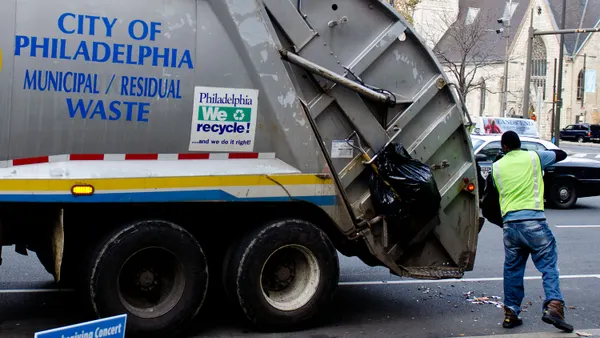Dive Brief:
- The National Waste & Recycling Association (NWRA) has announced that American National Standards Institute (ANSI) approved the revised mobile equipment standard Z245.1-2017. The standard applies to construction, maintenance, operation and overall use of mobile waste or recyclable materials collection, transportation and compaction equipment.
- The revised standard implements new safety signage with various levels of severity (caution, warning, or danger); clarifies collection operation, transit, and using the restraining device; and removes specific fall protection sections while acknowledging the need for companies to conduct individual risk assesments.
- This revised standard replaces the Provisional Amendment from 2014. It is one of many ANSI standards currently being revised, re-energized or developed by industry stakeholders.
Dive Insight:
While it was a contentious decision to remove fall protection from this specific ANSI standard, Bret Biggers, director of statistics and standards at NWRA, explained that the previous standard suggested a "one-size-fits-all" solution for safety that was not applicable to all mobile equipment. By removing such fall protection, each company is now expected to evaluate the specific types of risk on all of its mobile equipment and customize hazard assessments.
Because ANSI standards are developed and revised by a committee of labor suppliers, manufacturers, users, distributors and other industry players, it is no surprise that the standards are frequently updated to best serve all the stakeholders involved. Biggers explained that two ANSI standards for containers are currently in the pipeline for revisions in the next few months, and a standard for transfer stations will be highlighted later this year. The committee is also be re-energizing a standard for size reduction equipment and will begin developing a landfill standard for safety operations in late spring.
While the ANSI standards are only voluntary suggestions for best practices across the industry, many organizations including OSHA use the standards as operational guidelines. It is important that industry management and leaders stay on top of such standards to ensure that business is being run in the most efficient and safe way possible.











